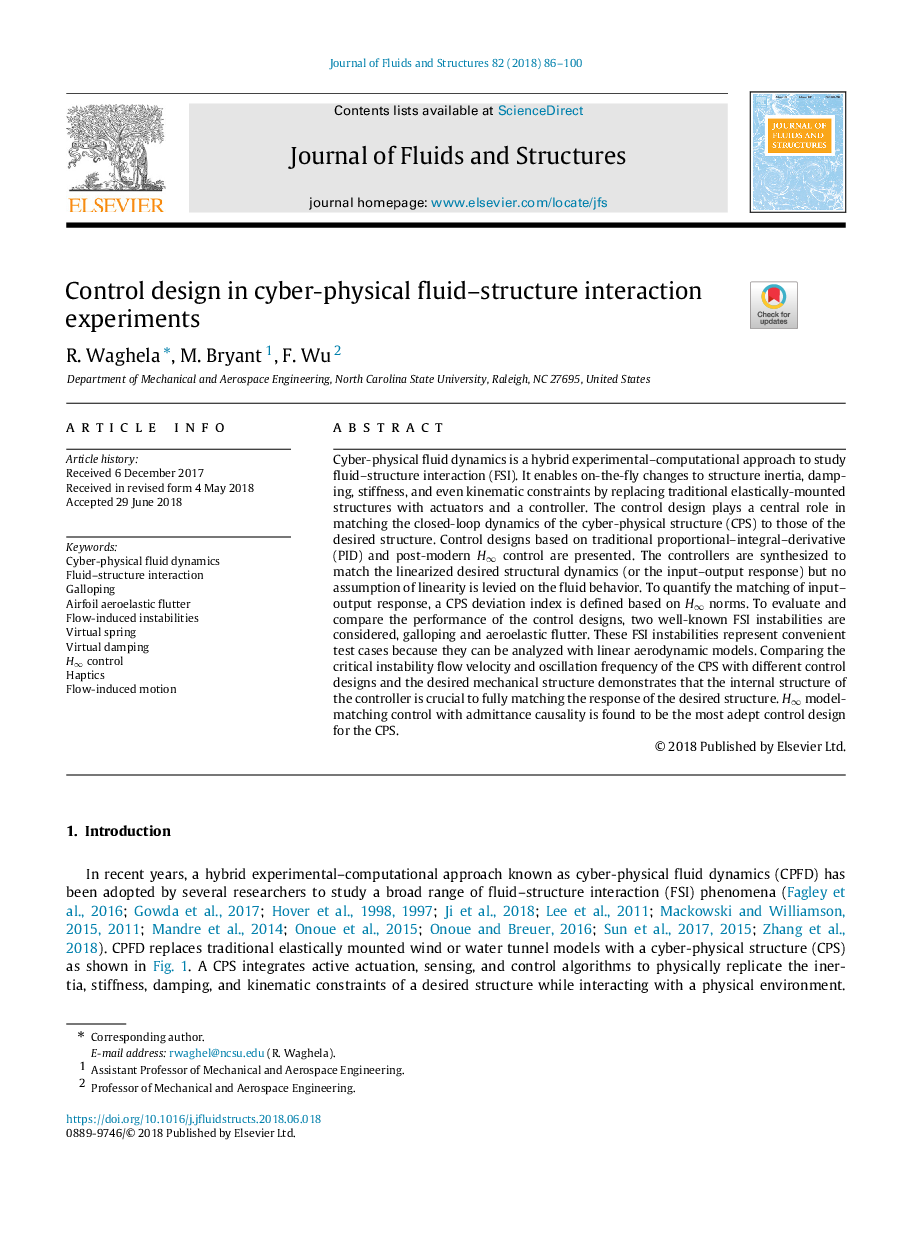| Article ID | Journal | Published Year | Pages | File Type |
|---|---|---|---|---|
| 7175672 | Journal of Fluids and Structures | 2018 | 15 Pages |
Abstract
Cyber-physical fluid dynamics is a hybrid experimental-computational approach to study fluid-structure interaction (FSI). It enables on-the-fly changes to structure inertia, damping, stiffness, and even kinematic constraints by replacing traditional elastically-mounted structures with actuators and a controller. The control design plays a central role in matching the closed-loop dynamics of the cyber-physical structure (CPS) to those of the desired structure. Control designs based on traditional proportional-integral-derivative (PID) and post-modern Hâ control are presented. The controllers are synthesized to match the linearized desired structural dynamics (or the input-output response) but no assumption of linearity is levied on the fluid behavior. To quantify the matching of input-output response, a CPS deviation index is defined based on Hâ norms. To evaluate and compare the performance of the control designs, two well-known FSI instabilities are considered, galloping and aeroelastic flutter. These FSI instabilities represent convenient test cases because they can be analyzed with linear aerodynamic models. Comparing the critical instability flow velocity and oscillation frequency of the CPS with different control designs and the desired mechanical structure demonstrates that the internal structure of the controller is crucial to fully matching the response of the desired structure. Hâ model-matching control with admittance causality is found to be the most adept control design for the CPS.
Related Topics
Physical Sciences and Engineering
Engineering
Mechanical Engineering
Authors
R. Waghela, M. Bryant, F. Wu,
